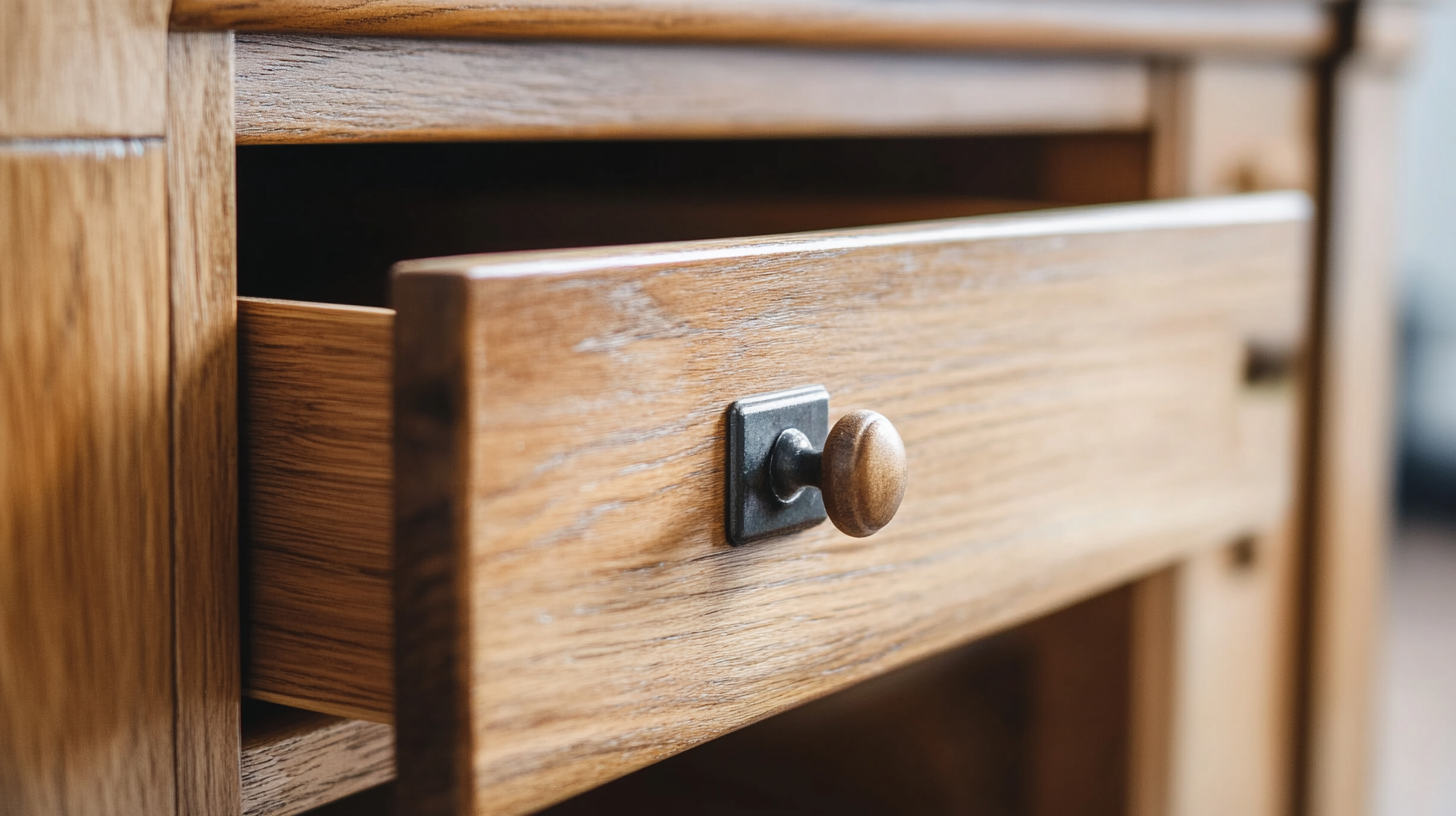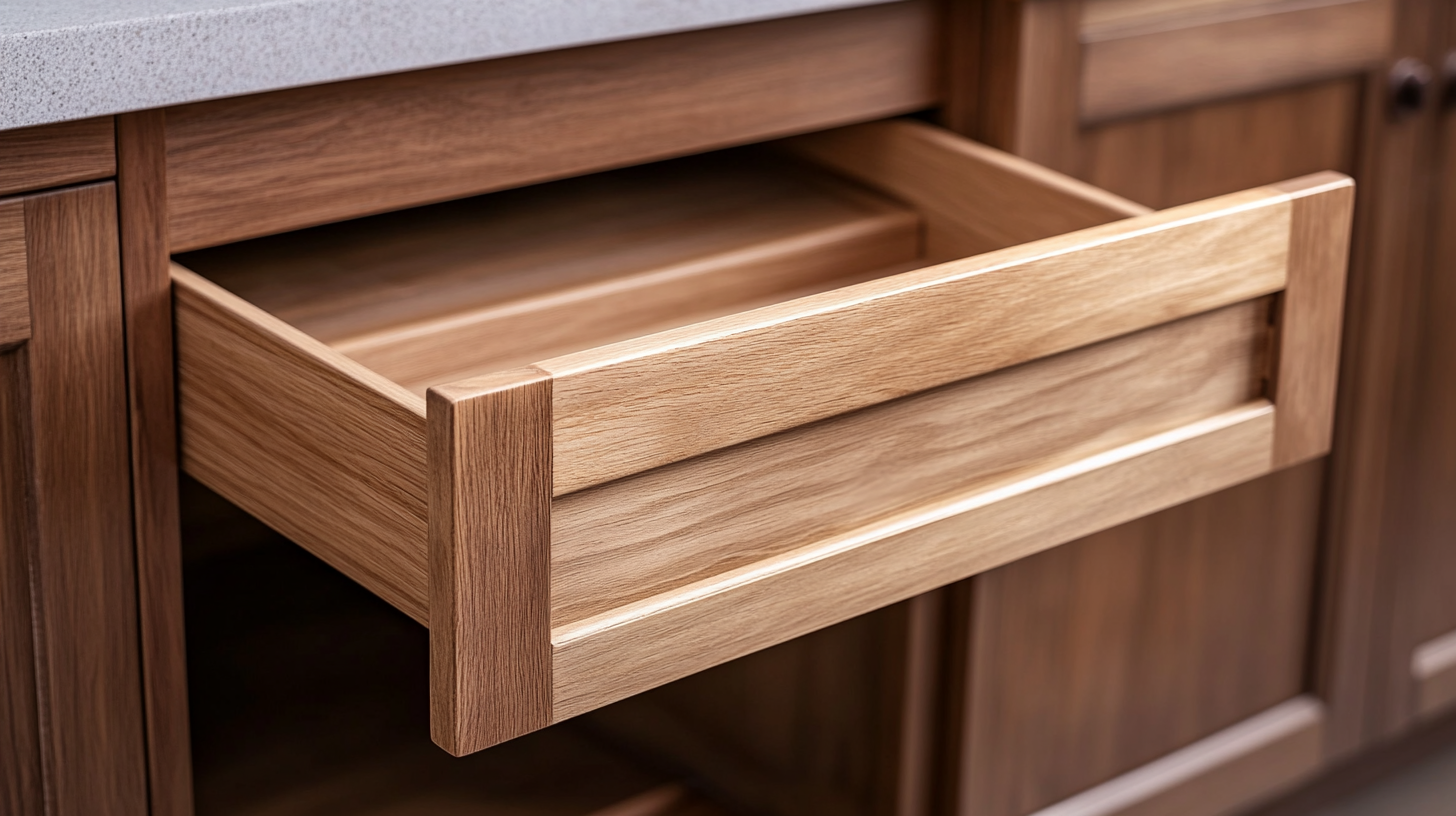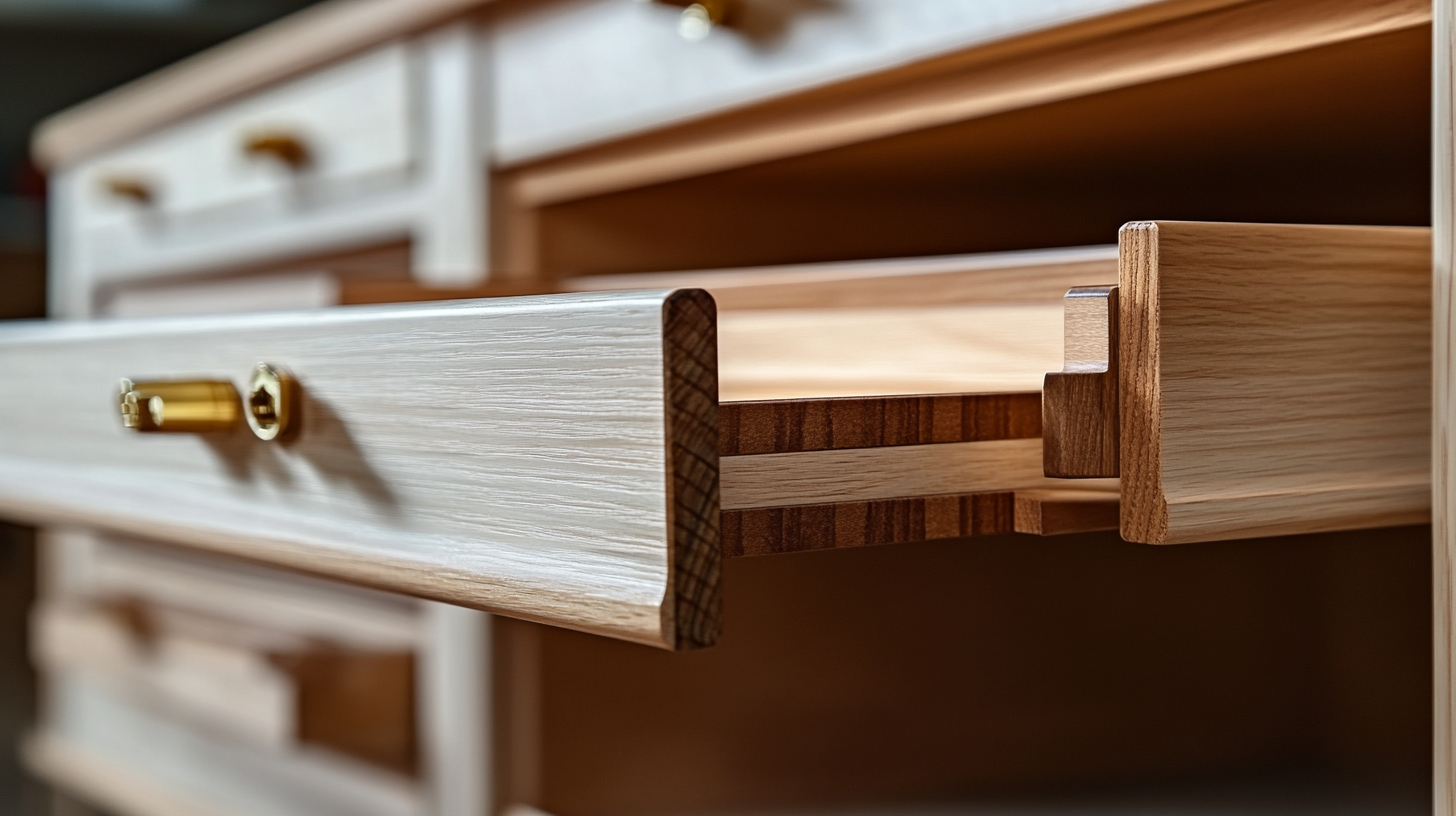Leave Your Message
When it comes to furnishing your home, the choice of drawer slides may seem like a minor detail, but it can significantly impact the functionality and aesthetic of your furniture. Among the various options available, wooden drawer slides have gained popularity for their timeless appeal and sturdy construction. However, selecting the right wooden drawer slides is not without its challenges. Factors such as weight capacity, ease of installation, and compatibility with different drawer materials can complicate the decision-making process. Additionally, the variety of wood types and finishes available may overwhelm those unfamiliar with woodworking. In this blog, we will explore the common challenges associated with choosing wooden drawer slides, providing insights and guidelines to help you make informed decisions that enhance both the beauty and utility of your furniture.

When it comes to selecting wooden drawer slides for your furniture, understanding the different types available in the market is crucial for ensuring both functionality and aesthetics. The resurgence of wood in cabinetry design has brought with it a variety of drawer slide options, each catering to specific needs. Traditional wooden runners, commonly found in vintage pieces, may not offer the durability and ease of use seen in modern alternatives. Today’s wooden drawer slides often incorporate advanced technologies that provide smoother operation and support heavier loads, making them suitable for deep drawers that can house bulky kitchenware and appliances.
As craftsmanship in furniture evolves, many consumers are now looking for drawer slides that not only maintain the timeless appeal of wood but also enhance usability. Options like undermount and side-mount wooden slides are becoming increasingly popular, as they offer a seamless look while allowing for easy access and organization. The current trends in multi-colored kitchens and frameless cabinets further emphasize the importance of selecting the right slide system, ensuring the interior hardware complements the overall design of the space. For those looking to revamp their furniture, understanding these various types of slides is essential in making an informed decision that balances style and strength.
When selecting wooden drawer slides for furniture, evaluating their load capacity and durability is crucial. Wooden slides, while offering a classic aesthetic appeal, vary significantly in their strength and construction materials. It’s essential to assess the maximum weight they can handle, especially if the drawers are intended for heavier items such as kitchenware or tools. Manufacturers typically provide guidelines regarding load capacity, but it’s wise to consider the nature of the items you will store and choose slides that exceed the estimated weight for added safety and longevity.
Durability goes hand-in-hand with load capacity. Wooden drawer slides can be susceptible to wear and tear, particularly in high-use areas. Factors like humidity and temperature fluctuations can affect the wood's integrity, leading to warping or splitting over time. Opting for high-quality hardwoods treated for moisture resistance can enhance the lifespan of these slides. Additionally, regular maintenance, such as applying wood conditioners, can further protect the slides from deterioration, ensuring they continue to function smoothly and efficiently as part of your beautifully crafted furniture.

The choice of wood species plays a critical role in the performance and aesthetics of wooden drawer slides, impacting both functionality and visual appeal. For instance, hardwoods like oak and maple are not just renowned for their durability, but they also provide superior dimensional stability compared to softer woods. According to recent studies by the Wood Packaging Material Research Initiative, hardwood slides experience less warping over time, ensuring smoother operation and longevity, which is crucial for high-use furniture.
Aesthetically, the grain and color of different wood species can significantly influence the overall design of furniture. Darker woods such as walnut can impart a classic, luxurious look, while lighter woods like birch offer a more modern appeal. The 2021 Furniture and Wood Products Industry Trends report highlights that 65% of consumers prioritize aesthetics when purchasing furniture, underscoring the importance of selecting the right wood species. By considering both performance and aesthetic qualities, furniture makers can enhance the appeal of their products while ensuring they withstand the test of time.

When it comes to installing wooden drawer slides in furniture, several challenges can arise that require careful consideration and planning. According to a report by the Woodworking Machinery Industry Association (WMIA), nearly 30% of woodworkers face difficulties with alignment and leveling during installation, which can lead to significant issues in drawer functionality. Properly aligning the slides is crucial; if they’re installed incorrectly, drawers may jam or slide unevenly, resulting in a frustrating user experience.
To combat these common installation hurdles, professionals recommend using high-quality mounting hardware that provides adjustable features. This can help accommodate minor misalignments and enable easier fine-tuning once the slides are in place. Additionally, utilizing a pre-drill guide can be beneficial, as evidenced by studies from the Forest Products Laboratory, which state that precision in pilot holes reduces the likelihood of wood splitting—an issue that can compromise the integrity of the drawer construction. Lastly, consider employing an experienced carpenter or installer who understands the nuances of wooden drawer slides, as their expertise can save time and prevent costly mistakes.
This chart illustrates the common challenges faced when selecting wooden drawer slides for furniture, along with their respective percentages. Understanding these challenges can help in making better choices for installation.
When it comes to wooden drawer slides, proper maintenance is essential for ensuring their longevity and smooth operation. To begin with, regular cleaning of the slides is crucial. Dust and debris can accumulate over time, leading to friction that hampers the sliding mechanism. Using a soft cloth to wipe down the slides, followed by a gentle application of furniture polish, can help maintain their finish and keep them operating smoothly.
Additionally, lubrication is a vital aspect of care that shouldn't be overlooked. Applying a light coat of beeswax or a suitable wood lubricant to the slides can minimize wear and tear and enhance performance. It's advisable to avoid excessive oil, which can attract dirt and grime, leading to further complications. Periodically checking for any signs of warping or damage is also recommended, as early intervention can prevent more serious issues down the line.
Lastly, environmental factors play a significant role in the upkeep of wooden drawer slides. Maintaining a consistent humidity level and avoiding extreme temperature fluctuations can help protect the wood from expanding or contracting. A little attention and care can go a long way in prolonging the life of your wooden drawer slides, ensuring that they continue to function as intended while enhancing the overall aesthetics of your furniture.
